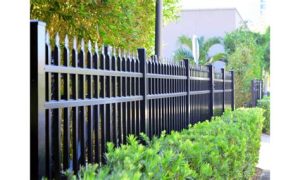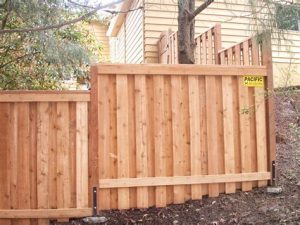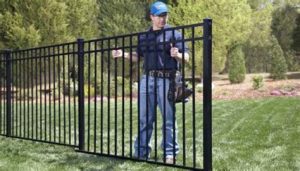Learn how to successfully navigate fence permit applications, understand zoning regulations, identify property boundaries, prepare site plans, and submit necessary forms and fees.When it comes to enhancing your property with a new fence, navigating the intricacies of fence permit applications can feel overwhelming. From understanding the specific requirements of your local regulations to compiling the necessary documentation, each step is crucial to ensuring a smooth approval process. This blog post will guide you through the essential documents and steps needed for a successful fence permit application. We’ll delve into the importance of reviewing local zoning regulations, identifying property boundaries, and preparing detailed site plans. Additionally, we’ll discuss the necessary application forms and associated fees you should be aware of. Whether you’re a seasoned homeowner or a first-time builder, our comprehensive overview will equip you with the knowledge you need to embark on your fencing project with confidence.
Understanding Fence Permit Applications
When planning to install a fence on your property, it’s essential to understand the fence permit application process. Obtaining the necessary permits not only ensures compliance with local regulations but also helps avoid potential legal issues in the future. The documents required for a fence permit application can vary depending on your location, but there are some common elements that you should be aware of.
- Site Plan: A detailed drawing of your property that indicates where the fence will be located.
- Property Boundary Documentation: Records showing the exact boundaries of your property, ensuring that your fence does not encroach on neighboring lots.
- Application Form: Most jurisdictions require a specific application form to be filled out when applying for a fence permit.
- Fees: There may be a fee associated with submitting your application, which can vary by location.
It’s important to check with your local zoning office to ensure you have all the necessary documents. Each municipality may have its own set of requirements, and understanding these can help streamline the fence permit application process significantly.
Reviewing Local Zoning Regulations
Before embarking on the journey of applying for a fence permit, it is crucial to understand the importance of local zoning regulations. These regulations dictate what types of fences can be installed, their height, materials, and placement on your property. Compliance with these rules ensures not only legal adherence but also neighborhood harmony.
Local zoning regulations can vary significantly from one municipality to another. Therefore, it is essential to check with your local zoning office or the planning department. They can provide the necessary documentation or resources regarding permissible fence types and any additional requirements specific to your area.
Additionally, some regions might have special regulations concerning historical districts, environmentally sensitive areas, or homeowner associations that may impose further restrictions.
Identifying Property Boundary Documentation
When applying for a fence permit, one of the essential steps is identifying property boundary documentation. This documentation serves as a legal confirmation of the limits of your property and is crucial in ensuring that any fence you plan to install complies with local regulations.
- Property Deed: This document lists the legal description of the property and often includes boundary lines.
- Survey Report: A professional land surveyor can provide an accurate survey of your property, marking the precise boundaries and any easements that may affect your fence installation.
- Plat Map: This map provides a graphical representation of your property and shows its boundaries in relation to surrounding properties.
By gathering this necessary property boundary documentation, you can avoid potential legal disputes with neighbors and ensure that your fence is built adhering to local zoning regulations.
Preparing Site Plans and Drawings
When applying for a fence permit, one of the essential components of your application is the site plans and drawings. These documents provide a clear representation of your property, helping local authorities understand how your proposed fence will fit into the existing landscape.
The site plan typically needs to include detailed measurements of your property, including the distance between the proposed fence and any property lines, structures, or significant trees. In addition to these measurements, it may also be important to show the location of existing utilities to avoid any mishaps during construction.
Moreover, when creating your drawings, ensure they are to scale. This means using a consistent ratio to depict the dimensions of your property accurately. Utilizing software or graph paper can help you maintain accuracy. Remember that precise site plans and drawings can greatly expedite the permit approval process, reducing potential delays.
Submitting Application Forms and Fees
When you’re ready to apply for a fence permit, one key element in the process is the submission of the appropriate application forms and fees. This step is crucial to ensure that your application is processed promptly and correctly.
- Your name and contact information
- The address of the property where the fence will be installed
- Details about the proposed fence (height, length, type, material)
- A description of the project and its purpose
In addition to completing the application form, you will also need to pay a filing fee. This fee can vary depending on the location, size of the fence, and local regulations. It’s essential to check with your local zoning office for the exact amount required. Failure to submit the correct fee could result in delays or even denial of your permit application.
Before submitting your application and fees, review the requirements carefully to ensure compliance with local zoning regulations. Being thorough at this stage can save you time and hassle later on.
Frequently Asked Questions
What is a fence permit?
A fence permit is an official approval from local authorities that allows homeowners to construct a fence on their property, ensuring that it complies with local zoning laws and regulations.
Why do I need a fence permit?
You need a fence permit to ensure that your fence meets safety and zoning regulations, avoiding legal issues and potential fines for improper construction.
What specific documents are typically required for a fence permit application?
Typically, you will need to provide a completed application form, site plan showing property boundaries, fence specifications (height, materials), and proof of ownership or authorization.
How do I obtain the application form for a fence permit?
You can usually obtain the application form from your local city or county building department’s website or by visiting their office in person.
Do I need to notify my neighbors before applying for a fence permit?
While it may not be a legal requirement in all areas, it’s often a good practice to inform your neighbors about your plans, as they may have concerns regarding property lines or aesthetics.
What happens if I build a fence without a permit?
Building a fence without a permit can result in fines, orders to remove the fence, and difficulties in selling your property in the future.
How long does it usually take to get a fence permit approved?
The approval time for a fence permit can vary widely but generally ranges from a few days to several weeks, depending on local regulations and the complexity of your application.




